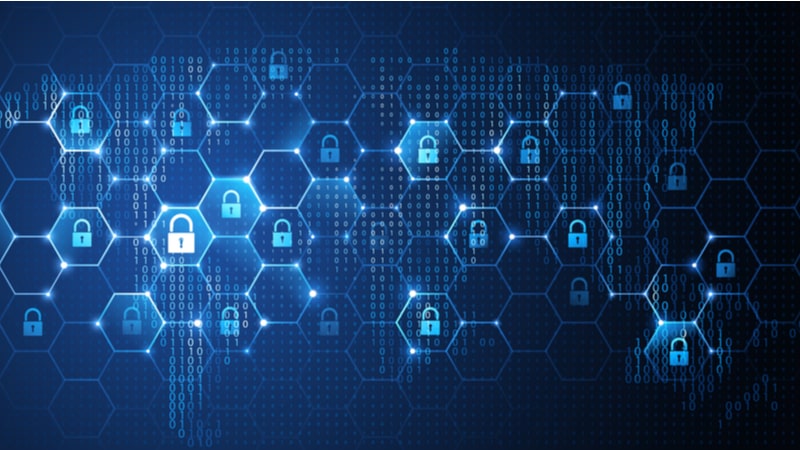
It’s Cybersecurity Awareness Month, and a good time to talk about how Federal agencies need to make network security a top priority. MeriTalk recently sat down with Jim Carnes of Ciena, and Zain Ahmed of Lumen Technologies, to discuss the importance of Federal government cybersecurity efforts – and take a deeper dive into the importance of a connected network, how partnerships garner the best results, and what to keep in mind while improving security efforts.
MeriTalk: Can you discuss how cybersecurity impacts Federal agencies today?
Carnes: We strive to create a holistic, multi-layered approach to allow agencies to simplify and build security into the network. Agencies need a strategy to protect the network from the beginning and defend their data. Federal agencies want to know their network is safe in order to continue their mission-critical tasks and outsmart adversaries. Now that agencies have gone remote through mass telework, it’s more important than ever to roll out effective security measures during the changing cybersecurity landscape.
MeriTalk: Tell us about challenges Federal agencies are facing, and how Ciena and Lumen can simplify those problems.
Carnes: The challenge that any government agency faces is, “how do you quickly build and operate a secure, trusted network infrastructure?” But that infrastructure needs to also be responsive to demand.
MeriTalk: So, what does it take to make a secure network?
Carnes: There are five components that make up a secure network. The first is availability – making sure the network can provide the services that the mission needs and respond to shifting mission demands across the globe.
From one area of the network to the other, how do you make sure that static infrastructure can respond? Availability is the first critical component to making sure the data is there when it is needed.
The second is confidentiality, which is critical in making sure the data is not exposed while in flight. You need to make sure the adversary is not looking at or manipulating the data in transit.
The third component is the integrity of the infrastructure. Is it operating in a way that you expect? Is it configured the way you want? Is it in compliance with agency requirements? If a change is made, are you sure the change was authorized and intended, and if not, can you detect that change?
The fourth and fifth components are resilience and resistance. A resilient network can recover quickly when an outage occurs, whether it’s man-made or natural.
Finally, resistance – how well can an infrastructure withstand an adversary’s attack at its core? Resistance has two components: 1) Was the network built securely? and 2) If so, is the supply chain feeding that effort secure from beginning to end, from hardware to software?
Build your network with great hardware and software, maintain it with talented and trusted people, and when the inevitable attack occurs, your mission will continue.
MeriTalk: It sounds like a partnership between running the foundation and running the software is crucial to having a secure network.
Ahmed: Yes, partnering in technology is crucial. That partnership comes into play not only between government and industry, but also with industry working together. Ciena and Lumen have been partnering for several years to help serve the missions of government agencies. We listen to government and use our strengths to help solve challenges. Together, we can provide agencies with complete solutions for a secure adaptive network – hardware to build the foundation, software for intelligent analytics and expertise to deploy, operate, and manage the solution. This is accomplished through partnerships.
MeriTalk: What differentiators can Ciena and Lumen offer together to government?
Ahmed: For the government, the solution should be seamless. When it comes to security it’s about being connected and mitigating risk. Because of what’s going on in the world today, securing government networks is less about what’s happening in the data center and more about protecting the network and the remote connected devices. Technology from Ciena and Lumen allows agencies to utilize adaptive networking to acquire intelligence, analyze the data, and respond to issues.
Additionally, when you do encryption in the layers that we operate, it’s going to be everywhere in the infrastructure that you have Ciena deployed. It’s important to have backup levels of encryption to make sure the data does not go unprotected. The layers are an additional security wrapper, and with that extra encryption you still have the full mission bandwidth available to you, and the data is protected. These layers produce a more intuitive, scalable, and secure network.
MeriTalk: How can you simplify security in a complex network from the beginning?
Ahmed: Government networks are often complex and can be difficult to manage and secure. But at Lumen, our approach is to work with agencies to simplify the complexities. Security should be built in versus bolted on. When agencies are seeking to start an IT modernization project, cybersecurity should be a primary consideration and a priority. This, again, is where partnering comes into play. Agencies can work with experienced providers to build security into the network, using the technology to protect vulnerable areas and build an environment where the security protections evolve as the network does.
Through our relationship, Ciena and Lumen offer solutions that provide adaptive, network management that secures the customer’s enterprise and helps to serve the mission.
